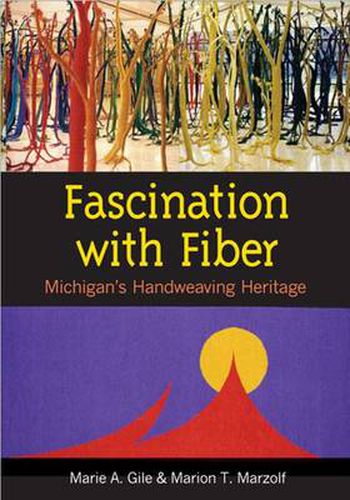Readings Newsletter
Become a Readings Member to make your shopping experience even easier.
Sign in or sign up for free!
You’re not far away from qualifying for FREE standard shipping within Australia
You’ve qualified for FREE standard shipping within Australia
The cart is loading…






Fascination with Fiber focuses on the forces that have kept the craft of handweaving alive in Michigan and throughout the country: individuals, organizations, and communities enlivened through necessity, opportunity, and creativity. For decades, Michigan has been at the center of handweaving and fiber arts and crafts, from the early days of immigrants who brought their skills with them from the Old Country through the latter part of the twentieth century, when the state was a vital part of the national fiber movement, including handweaving. Like the rest of the country, Michigan attracted immigrants who enriched its way of life. They hailed from countries where handicrafts and weaving were traditionally strong, and yet the textiles they produced in their new country, from linens to coverlets to rugs, took on a distinctly American expression. The book is based on oral histories, interviews, and documentary and artifact research, from stories of colorful characters such as Mary Atwater, the gun-toting weaver from Montana who helped organize the hand-weaving industry and who published the Shuttle-Craft Bulletin, to the story of Hartland as the site of the first national weaving institute in 1938, all the way to the formation of the Michigan League of Handweavers in 1959.
$9.00 standard shipping within Australia
FREE standard shipping within Australia for orders over $100.00
Express & International shipping calculated at checkout
Fascination with Fiber focuses on the forces that have kept the craft of handweaving alive in Michigan and throughout the country: individuals, organizations, and communities enlivened through necessity, opportunity, and creativity. For decades, Michigan has been at the center of handweaving and fiber arts and crafts, from the early days of immigrants who brought their skills with them from the Old Country through the latter part of the twentieth century, when the state was a vital part of the national fiber movement, including handweaving. Like the rest of the country, Michigan attracted immigrants who enriched its way of life. They hailed from countries where handicrafts and weaving were traditionally strong, and yet the textiles they produced in their new country, from linens to coverlets to rugs, took on a distinctly American expression. The book is based on oral histories, interviews, and documentary and artifact research, from stories of colorful characters such as Mary Atwater, the gun-toting weaver from Montana who helped organize the hand-weaving industry and who published the Shuttle-Craft Bulletin, to the story of Hartland as the site of the first national weaving institute in 1938, all the way to the formation of the Michigan League of Handweavers in 1959.